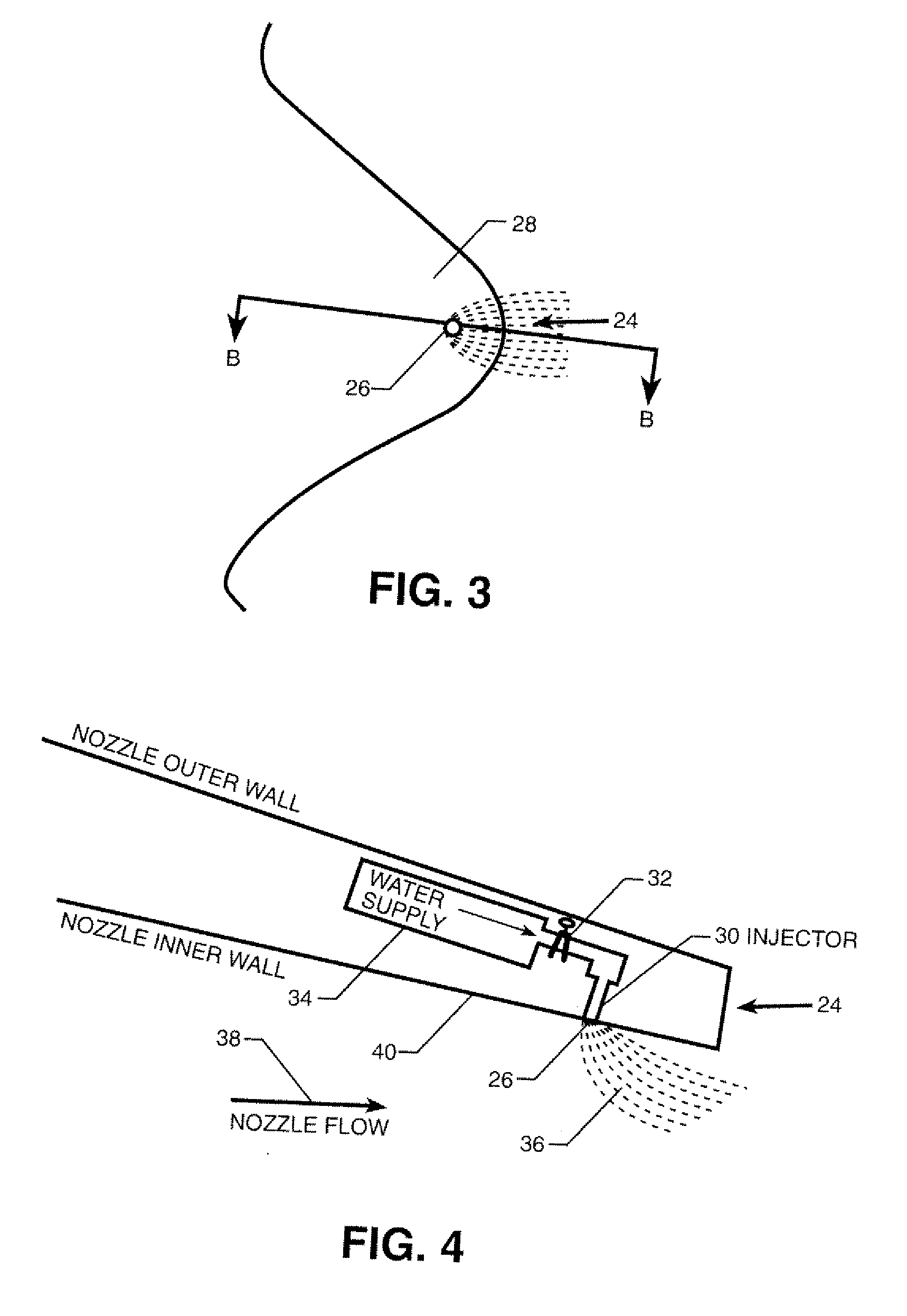Wet Active Chevron Nozzle For Controllable Jet Noise Reduction
a technology of active chevrons and chevrons, which is applied in the direction of efficient propulsion technologies, mechanical equipment, machines/engines, etc., can solve the problems of congestion at existing airports, affecting the growth of air transportation systems, and generating noise of aircraft, so as to reduce noise, reduce noise, and reduce noise
- Summary
- Abstract
- Description
- Claims
- Application Information
AI Technical Summary
Benefits of technology
Problems solved by technology
Method used
Image
Examples
Embodiment Construction
[0027]FIG. 1 shows a portion of a known jet engine 20 in which mechanically fixed chevrons, such as chevrons 14a and 16a, extend to penetrate into the stream of flow. FIG. 2 shows a portion of an engine 10 having a noise reduction system 12 constructed in accordance with at least one embodiment of the present invention. In briefly examining FIG. 1 and FIG. 2, there may not appear to be many differences. However, one will see that angle alpha ({acute over (α)}) exists in FIG. 1 as it relates to an angle that the chevrons, such as chevrons 14a and 16a, are directed into a flow path in this known nozzle design, as compared to the embodiment of the present invention which is depicted in FIG. 2. While this feature (i.e., angling the chevrons into the flow path) has been found to reduce noise at startup, unfortunately, it has also been found to reduce efficiency at cruise speed. Accordingly, as shown in FIG. 2, one can observe that chevrons in accordance with at least one embodiment of th...
PUM
 Login to View More
Login to View More Abstract
Description
Claims
Application Information
 Login to View More
Login to View More - R&D
- Intellectual Property
- Life Sciences
- Materials
- Tech Scout
- Unparalleled Data Quality
- Higher Quality Content
- 60% Fewer Hallucinations
Browse by: Latest US Patents, China's latest patents, Technical Efficacy Thesaurus, Application Domain, Technology Topic, Popular Technical Reports.
© 2025 PatSnap. All rights reserved.Legal|Privacy policy|Modern Slavery Act Transparency Statement|Sitemap|About US| Contact US: help@patsnap.com



